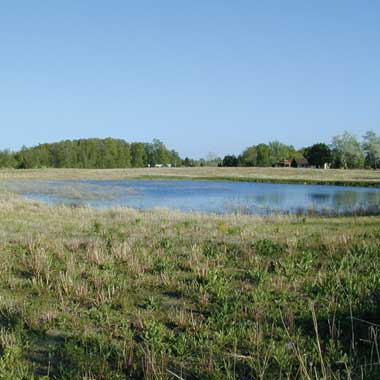Lake Erie Priority Area
The Lake Erie watershed is the glacial lake plain that roughly encompasses the geographic boundary of the Great Black Swamp (northwestern Ohio, northeastern Indiana, and southeastern Michigan), northeastern Ohio, and Lake St. Clair, and includes small pieces in Pennsylvania and New York. In the late 1800s, construction of dikes and ditches along the lakeshore to facilitate conversion to agriculture and other forms of development resulted in the drainage of many coastal marshes. These practices continue today and impact not only wetland habitat, but also water quantity and quality. Urban sprawl and industrial development, especially near Toledo and Detroit, and along the lake-shore, are significant threats to wildlife habitat and continue to fragment remaining natural communities.
Given the continued threat from sprawl and development, programs in this area are focused on the long-term protection of important and threatened wetland habitat, primarily for migratory birds. We also focus on the acquisition of existing or restorable coastal habitat for inclusion into state or federal wildlife areas. In Michigan, conservation work within this priority area is currently concentrated on fall migration needs of waterfowl with a secondary focus on production. Migratory habitat work is concentrated on public lands and primarily along the coast.
Located at the crossroads of the Mississippi and Atlantic flyways, this area serves as a primary migratory corridor for important species including American black ducks, Southern James Bay Population (SJBP) Canada geese, greater and lesser scaup, canvasbacks, mallards and other neotropical migratory birds. Remnants of the Great Black Swamp, including inland-forested, riverine, emergent and depressional wetlands and associated uplands, provide valuable habitat for breeding waterfowl, primarily mallards, wood ducks, and American black ducks.

Ducks Unlimited uses cookies to enhance your browsing experience, optimize site functionality, analyze traffic, and deliver personalized advertising through third parties. By continuing to use this site, you agree to our use of cookies. View Privacy Policy